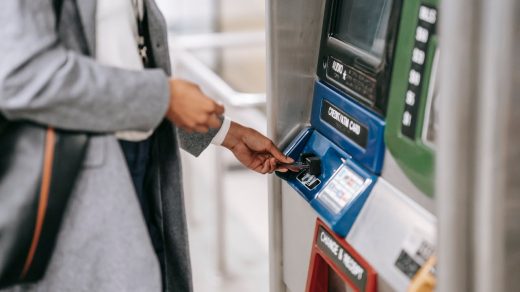In recent years, Africa’s e-commerce landscape has been undergoing a remarkable evolution, fueled by a confluence of factors that are reshaping the continent’s digital economy. One of the pivotal elements that will be driving this transformative shift is the emergence and growing vitalness of Account-to-Account (A2A) payments within the e-commerce ecosystem in new and creative ways. A2A payments in Africa’s burgeoning e-commerce sector will catalyze growth, enhancing financial inclusion, and fostering a dynamic digital marketplace across the continent.
The Rise of A2A Payments
A2A payments, also known as bank-to-bank transfers or direct transfers, are enabling seamless, secure, and real-time transactions between bank accounts. Unlike traditional payment methods that often involve intermediaries or cash-based transactions, A2A payments offer a direct and efficient way for consumers and businesses to conduct online transactions, making them particularly well-suited for the dynamic landscape of e-commerce.
A2A payments are flourishing in specific markets like Brazil, India, and Poland, offsetting sluggish growth in major markets dominated by cards like the UK and USA. Predictions indicate that global A2A transaction values will increase by a 14% compound annual growth rate (CAGR) until 2027, acquiring an additional 1% share of the global market during this period, according to the Global Payments Report (2024) by Worldpay.
During 2023, A2A emerged as the premier e-commerce payment avenue in Finland, Malaysia, The Netherlands, Nigeria, Norway, Poland, Sweden, and Thailand. A2A payments, grounded on swift and dynamic payment infrastructures, are fundamentally transforming payment environments, notably in significant emerging economies like Brazil and India. These A2A schemes are flourishing in emerging markets, bolstered by robust government backing aimed at fostering financial inclusivity and advancing digital payment ecosystems. Meanwhile, in advanced markets, cooperative endeavors among banks are actively propelling the adoption and utilization of A2A schemes.
Interestingly, Africa stands out in this narrative as it isn’t card-dominated. The continent seems poised to leapfrog traditional card-based systems. With credit card penetration in Africa hovering at a mere 3-5%, A2A payments present a significant opportunity for banks and the burgeoning African e-commerce sector. This opportunity extends beyond online platforms to encompass offline methods such as USSD, paving the way for inclusive and innovative financial solutions across the continent.
Enhanced Security and Efficiency
One of the primary advantages of A2A payments in the context of e-commerce is enhanced security and efficiency. By bypassing intermediaries and facilitating direct transfers between bank accounts, A2A payments reduce the risk of fraud and unauthorized transactions, providing merchants and customers with greater peace of mind when conducting online transactions. Additionally, the real-time nature of A2A payments ensures swift settlement, enabling faster order processing and delivery, which is crucial for meeting customer expectations in the digital age.
Financial Inclusion and Access
A2A payments play a pivotal role in advancing financial inclusion across Africa. As the continent experiences a surge in internet penetration and mobile device adoption, A2A payments provide individuals and businesses, including those in underserved rural areas, with access to a wide range of e-commerce opportunities. By leveraging existing banking infrastructure and digital payment networks, A2A payments bridge the gap between traditional banking services and the burgeoning e-commerce ecosystem, empowering more people to participate in online commerce and benefit from digital financial services.
Seamless Integration with E-commerce Platforms
Another key advantage of A2A payments is their seamless integration with e-commerce platforms. Leading e-commerce players in Africa, such as Jumia, Konga, Takealot, and Kilimall, can add A2A payment options, allowing customers to pay directly from their bank accounts during checkout. This integration streamlines the payment experience, and reduces friction in the transaction flow, contributing to higher conversion rates for online merchants, driving overall e-commerce growth. These online stores can build whole new experiences to accelerate network effects, much like the way cards built reward moats to use them.
How Does KwikAlat Facilitate A2A Payments for E-commerce in Africa?
KwikAlat facilitates A2A payments for e-commerce in Africa by providing its A2A payments infrastructure to banks and merchants. Here are some scenario examples of how this can work:
- Integration with E-commerce Platforms: KwikAlat can integrate its A2A payments solution with popular e-commerce platforms in Africa, such as Jumia, Konga, or Takealot. This integration allows customers to make direct bank transfers from their accounts while checking out on these platforms, providing a seamless and secure payment experience.
- Partnerships with Banks: KwikAlat can partner with banks across Africa to enable A2A payments for their customers. For example, let’s consider a situation where KwikAlat partners with Bank X. When a customer of Bank X purchases on an e-commerce website, they can choose to Pay by Bank facilitated by KwikAlat. The customer selects Bank X as their payment method, and KwikAlat’s infrastructure processes the A2A payment in real-time, completing the transaction securely.
- Merchant Direct Integration: KwikAlat can directly integrate its A2A payments infrastructure with large merchants or retailers in Africa. For instance, suppose a major electronics retailer wants to offer A2A payments to its customers. KwikAlat can provide them with the necessary tools and APIs to accept A2A payments directly from customers’ bank accounts, eliminating the need for intermediary payment methods like cards or mobile wallets.
- Cross-Border E-commerce: KwikAlat’s A2A payments infrastructure can also facilitate cross-border e-commerce transactions. Suppose a customer in Nigeria wants to purchase goods from an online store based in South Africa. By leveraging KwikAlat’s A2A payments network, the customer can initiate a direct bank transfer from their Nigerian bank account to the South African merchant’s account, simplifying cross-border e-commerce payments.
- Mobile App Integration: KwikAlat has a mobile app that integrates A2A payments for e-commerce. This app can be used by customers to make direct bank transfers securely and conveniently while shopping online, expanding the reach of A2A payments in the digital space.
KwikAlat’s A2A payments infrastructure empowers e-commerce in Africa by providing a reliable, cost-effective, and secure payment solution that aligns with the preferences of both consumers and businesses in the region.
How Does MPESA Facilitate A2A Payments in the Realm of Online Transactions?
M-Pesa, a dynamic mobile financial service, empowers A2A (Account-to-Account) payments for online transactions through the following process:
- Registration: Users embark on their M-Pesa journey by registering and intertwining their bank accounts or mobile money wallets with the service.
- Merchant Integration: Online merchants seamlessly integrate M-Pesa’s potent payment gateway into their digital platforms, be it websites or applications.
- Transaction Initiation: A pivotal moment arrives when a customer, navigating through the checkout process, elects M-Pesa as their preferred payment method.
- Authentication: The journey toward completion beckons the customer to M-Pesa’s fortified portal, where they authenticate the transaction using their PIN or password.
- Account Selection: Empowered with choice, the customer selects the desired bank account or mobile money wallet from which the transaction will transpire.
- Transaction Processing: M-Pesa orchestrates the transaction with precision, debiting the customer’s chosen account and crediting the merchant’s account in a seamless ballet of financial exchange.
- Confirmation: A moment of reassurance arrives as the customer receives a confirmation SMS or notification heralding the success of the transaction.
M-Pesa’s A2A payment solution acts as a catalyst in online transactions by:
- Bridging the Gap: Uniting bank accounts and mobile money wallets in a harmonious symphony of financial connectivity.
- Ensuring Security: Fortifying transactions with layers of security, ensuring both parties engage in a secure and trusted environment.
- Real-time Dynamics: Enabling the swift procession of transactions in real-time, transforming the transactional landscape with immediate confirmations.
- Alternative to Tradition: Offering an alternative avenue to traditional payment methods like credit cards, expanding the horizon of possibilities for digital transactions.
The transformative impact of M-Pesa’s A2A payment solution reverberates across Africa, notably in Kenya where its inception heralded a new era. It has democratized e-commerce, extending its reach to millions, including those traditionally underserved by conventional banking paradigms.
But wait, legacy financial institutions like banks have the opportunity to add an interesting chapter(s) to this unfolding story.
What Sets MPESA Apart as an A2A Service Instead of Solely Being a Mobile Money Platform, or Why Not Both?
M-Pesa is renowned as a mobile money platform, yet it also extends its prowess to encompass A2A (Account-to-Account) payment functionalities. Here’s the rationale behind MPESA’s dual nature:
Mobile Money:
- Users leverage MPESA to store and transfer funds via their mobile devices.
- The platform facilitates cash deposits and withdrawals, bill payments, and various transactions through mobile phones.
- Typically, MPESA’s mobile money services are utilized for person-to-person transfers, airtime top-ups, and bill settlements.
A2A (Account-to-Account):
- MPESA’s A2A capabilities empower users to seamlessly transfer funds from their bank accounts directly to merchants’ accounts.
- This service finds its stride in online transactions, including e-commerce payments, utility bill settlements, and a spectrum of digital payments.
- A2A transactions are favored for endeavors necessitating heightened security and convenience, such as online shopping ventures.
MPESA offers both mobile money and A2A capabilities because:
- While many individuals in Africa own mobile phones, not all possess bank accounts or credit cards.
- Mobile money services bridge the financial divide, fostering inclusion for the unbanked and underbanked sectors.
- A2A transactions add an extra layer of ease and protection, particularly for digital transactions.
- MPESA’s versatile approach allows users to opt for the payment method that aligns best with their requirements.
In essence, MPESA embodies both a mobile money platform and an A2A payment solution, affording users a diverse array of payment avenues tailored to their preferences and needs.
KwikAlat and M-PESA approach A2A payments for e-commerce in Africa from different angles, reflecting their respective strengths and target markets. Here’s how they differ in enabling A2A payments specifically for e-commerce in Africa:
Target Audience:
- KwikAlat: Targets banks, financial institutions, businesses, and even telcos. Provides white-label A2A payments infrastructure to facilitate seamless bank-to-bank transfers for e-commerce transactions. Intends to power financial access by empowering systemically critical organizations, which usually have huge merchant networks.
- M-PESA: It is telco-led. Targets individual consumers, including unbanked and underbanked populations. Offers mobile money services primarily for person-to-person transfers, bill payments, and merchant transactions at a consumer level.
Integration with E-commerce Platforms:
- KwikAlat: Offers APIs and SDKs for easy integration of A2A payments into existing e-commerce platforms. Enables merchants to accept direct bank payments from customers, enhancing the checkout experience and reducing transaction friction.
- M-PESA: Provides integration options for merchants to accept mobile money payments through M-PESA wallets. While suitable for consumer-level transactions, it may not offer the same level of integration and customization for bank-to-bank e-commerce transactions.
Scalability and Customization:
- KwikAlat: Scalable infrastructure that allows banks and businesses to customize A2A payments solutions based on their specific e-commerce needs. Provides flexibility in terms of transaction volumes, currencies, and payment methods.
- M-PESA: Standardized mobile money platform with predefined functionalities. While scalable for consumer-level transactions, may have limitations in customization and scalability for large-scale e-commerce transactions involving bank-to-bank transfers.
How Mobile Payments in E-commerce Can Be Powered by A2A
Mobile payments in e-commerce can be powered by A2A (Account-to-Account) payments infrastructure in several ways, enhancing convenience, security, and efficiency for both merchants and customers:
- Direct Bank Transfers via Mobile Apps: Integrating A2A payments into mobile apps used for e-commerce transactions enables customers to make direct bank transfers from their accounts. For example, a customer shopping on a mobile app can choose Pay by Bank as their preferred method and initiate a secure transfer directly from their bank to the merchant’s account.
- Mobile Wallet Integration: A2A payments can complement mobile wallets by offering an alternative payment option. Customers who prefer bank transfers over using funds from their mobile wallets can seamlessly switch to A2A payments during the checkout process. This flexibility caters to diverse customer preferences and expands the range of payment choices available.
- In-App Payment Solutions: E-commerce apps can integrate A2A payment solutions within their platforms, allowing customers to complete transactions without leaving the app. By embedding A2A payment functionalities, such as verifying bank account details and initiating transfers, within the e-commerce app, the payment process becomes more streamlined and user-friendly.
- One-Click A2A Payments: A2A payments can enable one-click checkout experiences on mobile devices. Once customers have set up their bank account details within the e-commerce app or mobile wallet, they can initiate instant A2A payments with just a single click, eliminating the need for manual input of payment information for each transaction.
- Real-Time Confirmation and Settlement: A key advantage of A2A payments for mobile e-commerce is real-time confirmation and settlement. When a customer initiates an A2A payment using their mobile device, the transaction can be processed and settled instantly, providing merchants with immediate confirmation of payment and reducing waiting times for order fulfillment.
- Enhanced Security Features: A2A payments infrastructure incorporates robust security measures, such as encryption protocols and authentication mechanisms, to safeguard transactions conducted via mobile devices. This enhanced security reassures customers and merchants alike, fostering trust and encouraging more mobile-based e-commerce transactions.
- Integration with Mobile Banking Apps: Banks offering mobile banking apps can integrate A2A payments directly into their platforms, allowing customers to access A2A payment functionalities seamlessly. This integration leverages the existing user base of mobile banking apps, making A2A payments easily accessible to a wide range of mobile users engaging in e-commerce activities.
Thus, by leveraging A2A payments within the broader e-commerce ecosystem, businesses elevate the payment experience, reduce friction in transactions, and cater to the growing demand for secure and convenient mobile payment solutions.
KwikAlat has a pivotal role in powering mobile payments in e-commerce through its robust A2A (Account-to-Account) payments infrastructure. Here’s how KwikAlat facilitates and enhances mobile A2A payments for e-commerce:
- Seamless Integration: KwikAlat provides seamless integration of A2A payment solutions into mobile e-commerce platforms and apps. This integration allows merchants to offer A2A payments as a payment option alongside other methods, providing customers with a convenient and flexible payment experience.
- Secure Transaction Processing: KwikAlat’s A2A infrastructure incorporates advanced security features to ensure safe and secure transaction processing. This includes encryption protocols, multi-factor authentication, and fraud detection mechanisms, enhancing trust and confidence in mobile A2A payments.
- Real-Time Settlement: With KwikAlat, mobile A2A payments are processed in real time, enabling merchants to receive immediate confirmation of payment and initiate order fulfillment without delays. This real-time settlement feature augments efficiency and customer satisfaction in mobile e-commerce transactions.
- Customizable Solutions: KwikAlat offers customizable A2A payment solutions tailored to the specific needs and requirements of e-commerce businesses. This includes customizable payment flows, branding options, and integration capabilities, empowering merchants to create a seamless and branded payment experience for their customers.
- One-Click Checkout: KwikAlat enables one-click checkout experiences for mobile A2A payments, streamlining the payment process and reducing friction for customers. By simplifying the checkout journey, KwikAlat enhances conversion rates and encourages repeat purchases in mobile e-commerce.
- Mobile Wallet Integration: KwikAlat supports integration with mobile wallets, allowing customers to link their bank accounts to their mobile wallets for A2A payments. This integration expands the reach of mobile A2A payments and provides customers with a convenient payment method within their preferred mobile wallet ecosystem.
- APIs and SDKs: KwikAlat provides APIs (Application Programming Interfaces) and SDKs (Software Development Kits) that enable seamless integration of A2A payments into mobile e-commerce apps. Developers can leverage KwikAlat’s APIs and SDKs to build robust and scalable mobile payment solutions with A2A capabilities.
KwikAlat charges mobile e-commerce businesses and legacy financial institutions, including telcos to leverage the benefits of A2A payments, including security, real-time processing, and convenience, thereby bolstering the mobile payment experience for merchants and customers.
Supporting Africa’s Economic Growth
Adopting A2A payments in Africa’s e-commerce ecosystem aligns with broader economic objectives, including job creation, entrepreneurship, and trade facilitation. By facilitating secure and efficient payment transactions, A2A payments contribute to the growth of small and medium-sized enterprises (SMEs) operating in the digital space, enabling them to reach a broader customer base, expand their market presence, and drive economic prosperity at the grassroots level. Moreover, A2A payments support cross-border e-commerce activities, fostering regional trade partnerships and enhancing Africa’s position in the global digital economy.
Statistics and Growth Trajectory
Compelling statistics and trends underpin the growth trajectory of African e-commerce. With more than 400 million internet users, Africa boasts the second-largest internet user population globally, signaling a robust digital market.
Mobile internet users dominate web traffic, accounting for 69% of total web traffic, and are projected to shape an almost exclusively mobile-based market by 2040. Rising middle-class incomes, a youth bulge, and government support through initiatives like the African Continental Free Trade Area (AfCFTA) agreement further fuel the expansion of e-commerce, with estimates suggesting a market size of $180 billion by 2025.
Conclusion
The importance of A2A payments in Africa’s e-commerce landscape cannot be overstated. As digital commerce continues to evolve and thrive across the continent, A2A payments are a cornerstone of financial innovation, driving inclusive growth, empowering businesses and consumers, and unlocking new opportunities in the digital marketplace. With a robust infrastructure, strategic partnerships, and a commitment to technological advancement, Africa is poised to harness the full potential of A2A payments and propel its e-commerce ecosystem to new heights of success and sustainability.



